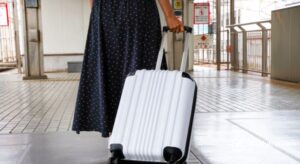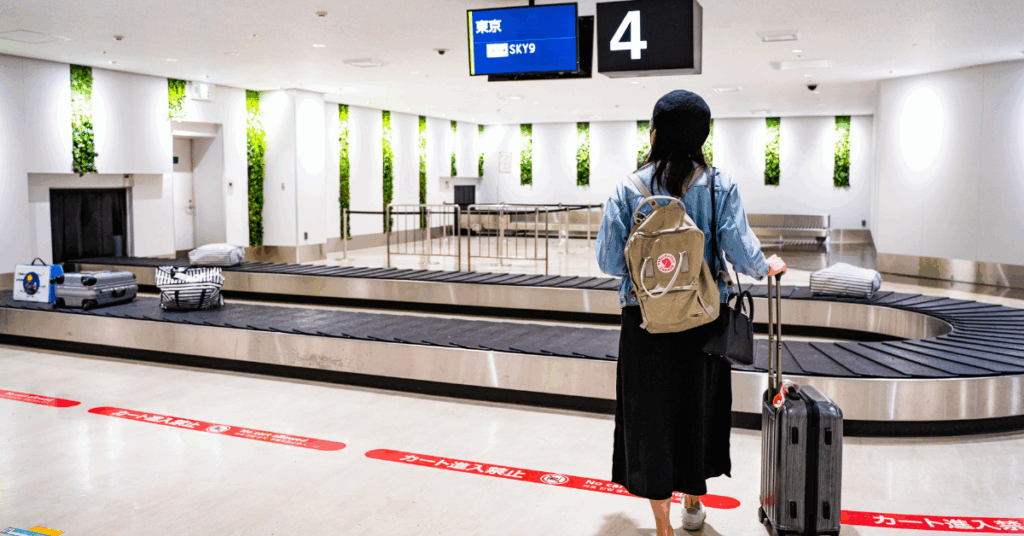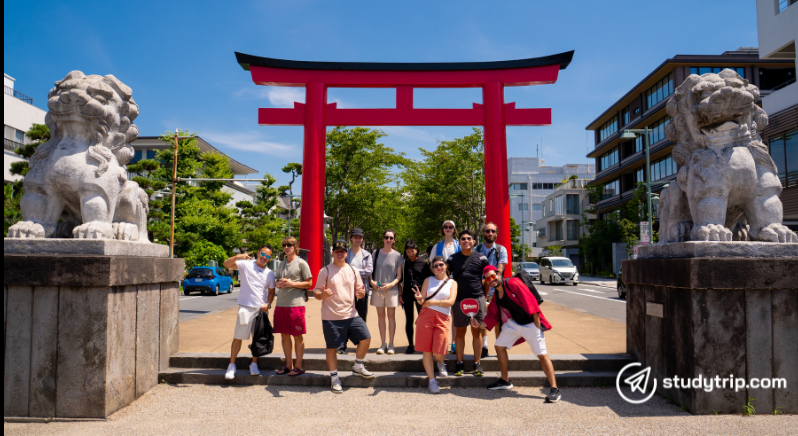Planning a student study trip abroad? Use our student group travel checklist to ensure you are packed, prepared, and ready for an unforgettable journey.
When planning educational group travel, thoughtful packing can prevent unnecessary stress for both students and trip leaders. This group travel packing list is designed for anyone organizing group trips and includes universal packing tips as well as a few country-specific tips to ensure students are comfortable and prepared for their adventure.

1. What to Pack in Your Bag: Basic Items for a Student Group Travel Checklist
Start with the everyday essentials, these are the reliable, go-to items every student should include in their bag, no matter the destination. From weather-appropriate clothing and a sturdy backpack to personal hygiene items, this part of the student group travel checklist covers all the basics needed for comfort, mobility, and confidence abroad.
Layered Clothing
Encourage students to pack versatile clothing suitable for varying climates. Morning classes might be cool in the air conditioning, while afternoon excursions under the sun can be warm. Think T-shirts, light jumpers, a compact raincoat, and thermals if traveling in cooler months. Layers are efficient, especially when packing light. Check out the forecast for your destination in advance, or reach out to our expert staff for specific recommendations!
Slip-on or easy to remove shoes
From homestays in Europe to temple visits in Asia, students may be asked to remove shoes. Comfortable, easy-on/off footwear saves time and maintains cultural respect.
Plug Adaptors
Your group travel packing list should always include a universal plug adapter. Power outlets and voltage differ between countries—especially across Europe and Asia—so confirm compatibility for phones, tablets, and chargers in advance.
Umbrella
Whether dodging sudden summer rain in Japan or spring drizzles in France, a compact travel umbrella is a smarter choice than a bulky coat in humid climates.
Refillable Water bottle
Staying hydrated is essential for active days, especially in warm destinations. While public fountains are widely available in European countries like Italy and Spain, access is more limited in Japan and Korea. Still, a reusable water bottle is recommended for use in hotels, schools, and indoor venues, and it reduces plastic waste. Our tour leaders will make sure your group is taken care of, with plenty of stops to hydrate.
Personal Souvenirs
If staying with a host family or new friends, consider bringing small gifts from your home country. This gesture is universally appreciated and can help establish a warm connection with your hosts.

2. Must-Have Travel Essentials: Documents, Devices, and Daily Tools
In addition to clothing and toiletries, students should carry critical items that support communication, safety, and logistics. This includes passports, visas, travel insurance, a SIM card or pocket Wi-Fi, portable chargers, and copies of important documents. These essentials are key to staying connected and organized throughout the trip, and should be packed securely and accessibly.
Portable chargers
Long days out mean limited access to outlets. A portable charger is essential for keeping phones powered for navigation, translation apps, emergency contact, and capturing memories.
SIM/eSIM or Pocket Wifi
Reliable internet access is essential for communication, coordination, and safety. Consider SIM cards, eSIMs, or a portable pocket Wi-Fi unit. If you need help arranging these services just let us know, as we can suggest our trusted partners to help your students stay in touch. Check out our SIM partners in France, Spain, and Italy.
Toiletries & Medication
Students may not find their preferred brands abroad, especially for things like deodorant, toothpaste, or specific medications. Include essentials in your group travel packing list and advise students to pack enough for the trip’s duration.
*Pro tip: Be sure to check any medication that is banned in your destination country to avoid issues at customs. For example, Japan has strict rules against what not to bring like certain medications used to treat ADHD that are commonly prescribed in Western countries.
Copies of Important Documents
Make sure each student carries a copy of their passport, visa (if applicable), and travel insurance in a separate part of their luggage from the originals. Digital copies should also be stored securely (e.g., in a password-protected folder or emailed to themselves). As a group leader, it’s wise to keep a backup set of student documents with you, securely stored, in case of loss or emergencies.
Emergency Contact Numbers
Compile a list of key emergency numbers for each destination—local police, ambulance, the nearest embassy or consulate, and your local program partner or guide. Students should carry this list physically and digitally. It’s also useful to include your own contact information and any group WhatsApp or other group communication tool you plan to use while on tour.
Student List
We recommend carrying a list of important student information, such as dietary restrictions, allergies, medications, and emergency contact details. Your StudyTrip.com coordinator will assist in preparing and collecting all necessary information before departure and will keep a copy. However, it’s a good idea to bring your own copy to ensure your trip goes as smoothly as possible.
3. Trip-Specific Items for a Student Group Travel Checklist
Depending on your destination and itinerary, certain activities or environments may require additional gear. This part of the student group travel checklist helps group leaders and students prepare for specific experiences, ensuring comfort, cultural appropriateness, and full participation.
Location & Activity Specific Packing Recommendations
Heading to the beach? Pack swimwear, sunscreen, and a quick-dry towel.
Planning a mountain or countryside excursion? Don’t forget hiking shoes, layers, and a rain jacket.
Visiting religious sites? Bring modest clothing or a lightweight cover-up for shoulders and knees.
Exploring urban centers with cobblestone streets? Comfortable walking shoes are a must.
4. Country Specific Packing Recommendations
In Japan cash is king and many shops still prefer cash. Plan to bring some with you, and you can always withdraw money from ATMs once in the country. Though public transportation is efficient in Korea, navigating can be tricky so prepare a bit in advance and suggest that your students download apps in advance to help.
In busy tourist areas, especially in major European cities, it’s wise to opt for crossbody bags or money belts for added peace of mind and ease of movement.
Tailoring your packing list to the type of trip ensures your group is ready for every part of the experience, without overpacking or being caught unprepared. Need more advice about what to bring? Don’t worry, your StudyTrip.com coordinator will help make sure you’re fully prepared for your itinerary, weather, and all destinations.
Final Prep: Set Your Students Up for Success
Packing is just one part of the journey, but it helps set the tone for everything that follows. With this student group travel checklist, your students will be ready to learn, explore, and make lasting memories abroad.
Still have questions or need help tailoring the list to your specific trip? Our coordinators are here to guide you every step of the way—from what to pack to what to expect.
Reach out today and let us help you create a seamless, stress-free experience for your group.





